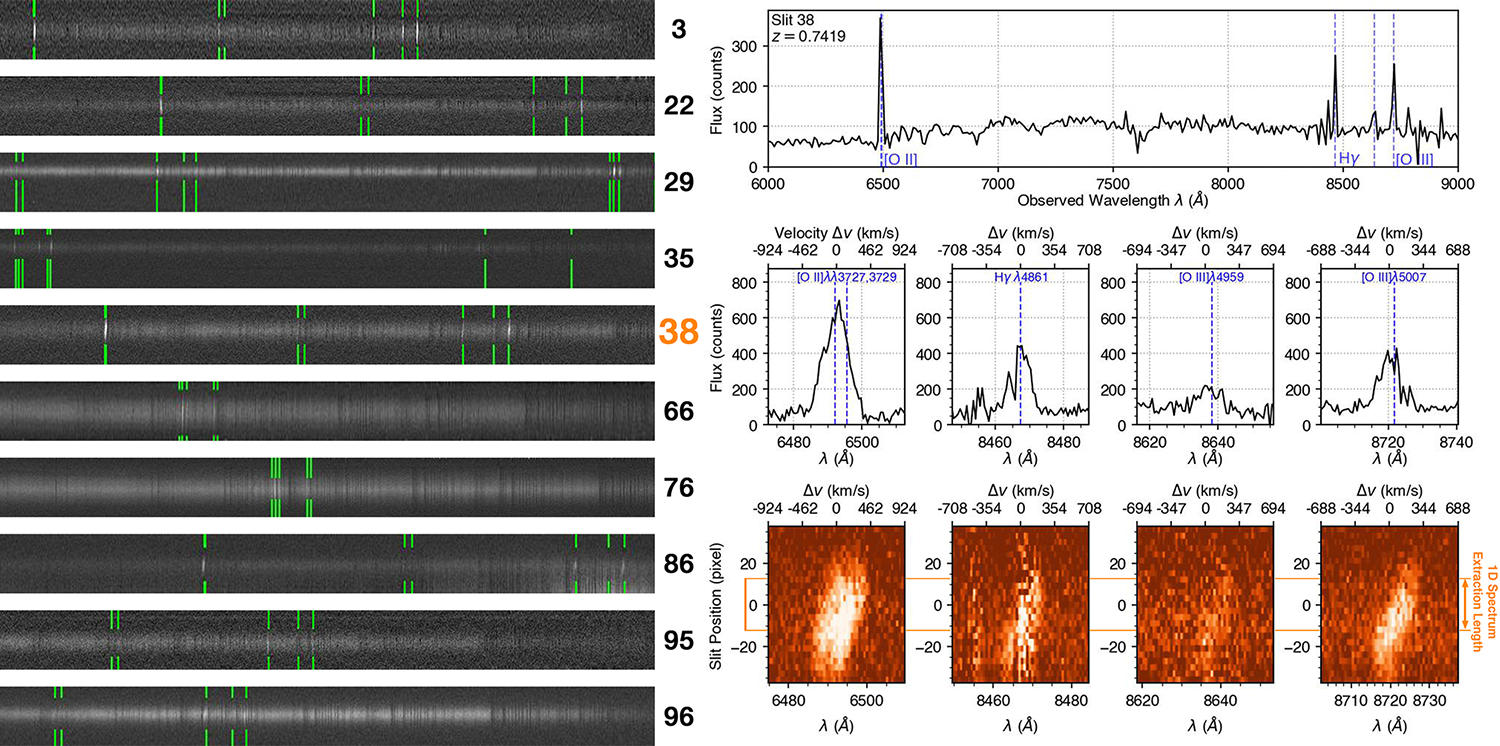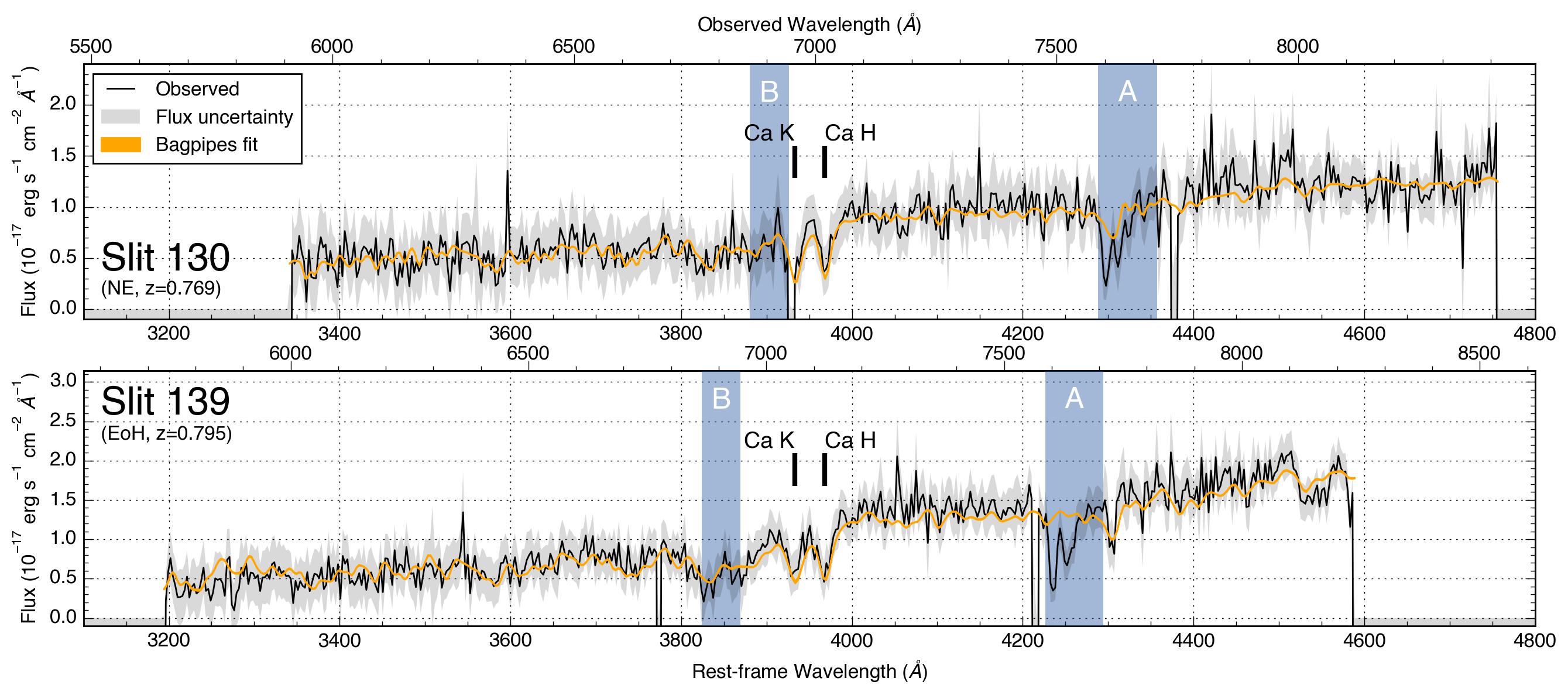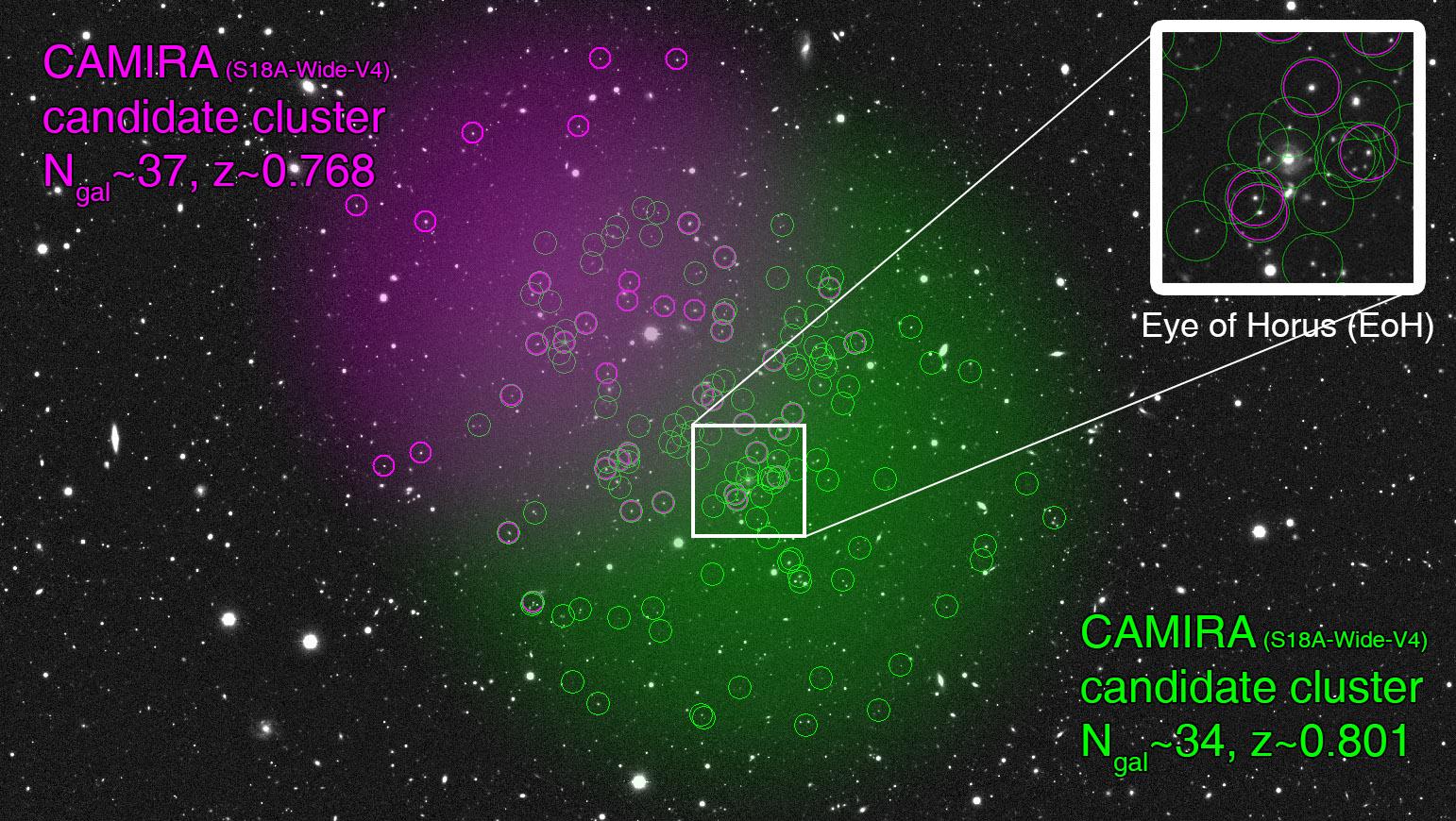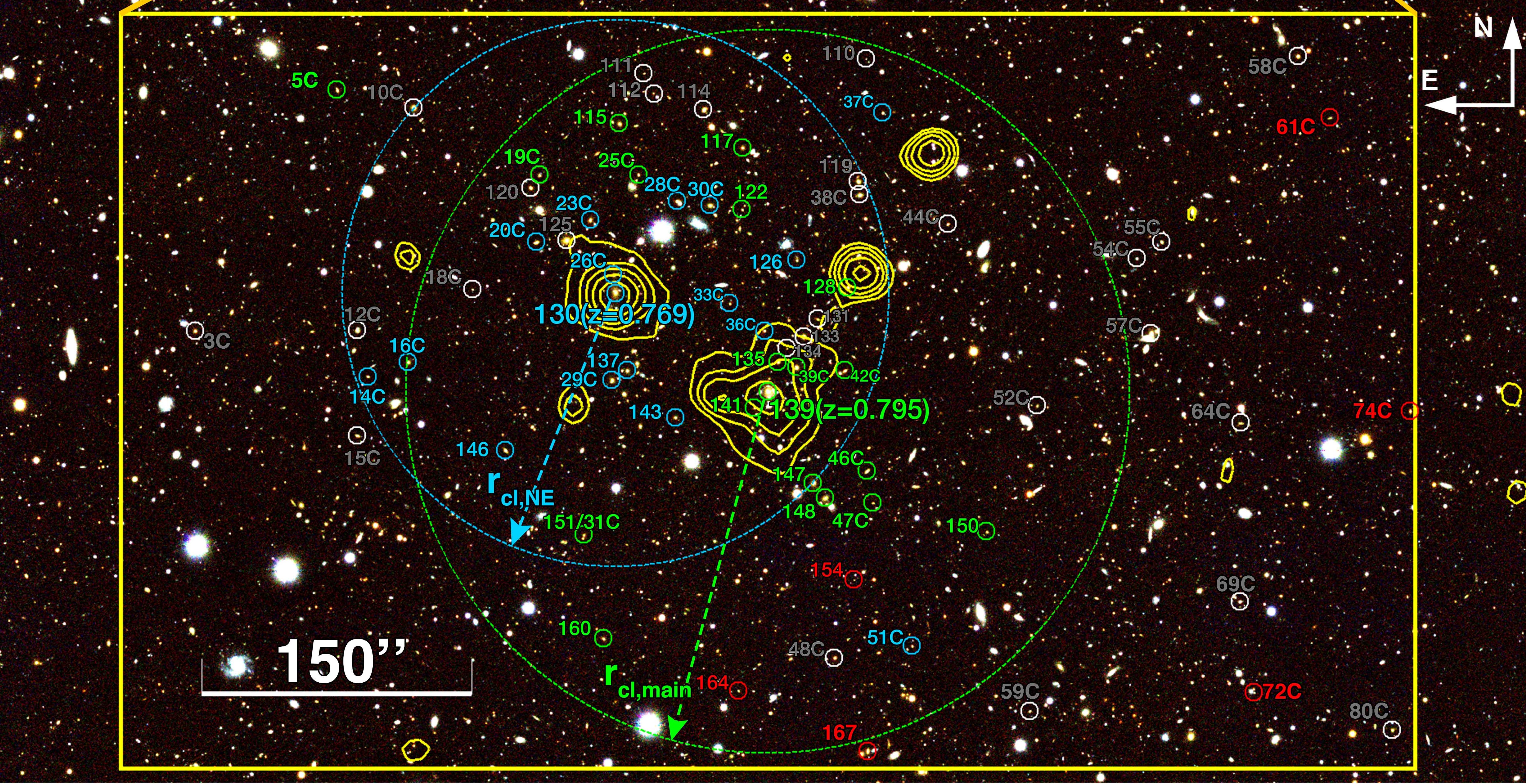The discovery of Eye of Horus, a rare double source-plane lens system with z = 0.795 and z = 1.302 and 1.988, has also led to the identification of two high-redshift (z ∼ 0.8) galaxy clusters in the same field based on the subsequent analysis of the Subaru/Hyper Suprime-Cam (HSC) optical and XMM-Newton X-ray data. The two brightest cluster galaxies (BCGs), one of which is the lensing galaxy of Eye of Horus, are separated by only ∼100''. Here, we present a follow-up optical spectroscopic survey of this Eye of Horus field, obtaining ∼200 optical spectra using MMT/Binospec. We have confirmed that there indeed exist two galaxy clusters at z = 0.765 (the NE cluster) and 0.795 (the main cluster). Despite the small separation on the sky, these two clusters have a velocity offset of ∼4300 km s−1 , making them a line-of-sight superposition rather than a cluster merger. The dynamial mass of the main cluster is consistent with the one estimated from X-ray, but the dynamical mass of the NE cluster is significantly smaller than that derived from X-ray, suggesting a possible contamination by an AGN (e.g., in the BCG). In addition, we have detected a significant excess of galaxies at z = 0.89, indicating that this field is extremely rich with galaxies at z ∼ 0.75–0.9.




